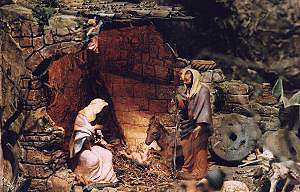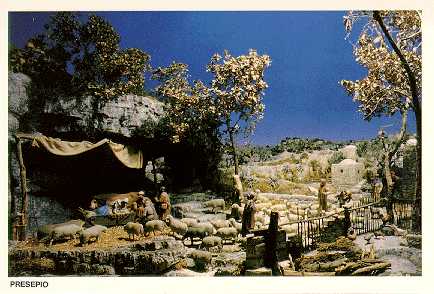|
|
|
|
Located in Southern Europe, Italy is a peninsula extending into the central Mediterranean Sea, northeast of Tunisia. The Italian Christmas, as it is celebrated today, has two origins: the familiar Christian traditions blended with the pagan traditions of the Roman Empire. The great feast of that era was "Saturnalia," celebrated from December 17 to 24 to honor Saturn, god of the harvest. Now, these dates coincide with part of the pre-Christmas celebrations of Advent. Consequently, Christmas markets, merry-making and torch processions, honor not only the birth of Jesus, but also the birth of the "Unconquered Sun." Natale, the Italian word for Christmas, is the translation for "birthday."
These shepherd musicians claim that it was bagpipe music that soothed Mary during her labor and lulled the Christ Child to sleep in Bethlehem. Figures of the zampognari are very popular in nativity scenes and you can find many representations of them in the crèche shops in Naples.  Christmas Eve is a time for viewing Italy's famous Nativity scenes or presepi, some of great complexity and antiquity. The focal point consists of figures of the Holy Family crafted from wood, clay, polyresin, or plaster. An ox and ass are nearby because legend tells us that their breath warmed the Christ Child in the manger at Bethlehem. Individual artists create their own intricate landscapes around these figures. There may be ancient ruins, caves, grottoes, and even Mount Vesuvius in the background. Angels are suspended from wires, and occasionally, some local celebrities will be part of the scene. The most beautiful and elaborate Nativity scenes are set up in churches, especially in Naples where the tradition of carving presepi figures goes back many centuries.
On Christmas Day there is another eating bonanza. A typical meal might consist of various hors d'oeuvres (Parma ham, salami, olives, etc.), then perhaps a broth or egg soup followed by pasta such as lasagne, fettucine, and tortellini. Then there is a selection of roast and deep-fried meats, deep-fried vegetables, and various salads. Desserts usually include panettone (fruit cake), torrone (nougat) and panforte (gingerbread) made with hazelnuts, honey and almonds. Though many Italian families have adopted the Christmas tree (mostly in the northern regions), some still prefer the ceppo, the Italian Christmas pyramid on which a manger scene may be set. For many generations, the principal gift-bringer in some areas was a uniquely Italian folk character named La Befana who would distribute toys in honor of Epiphany, January 6th, when the season comes to its official end. In other areas (Venice and Mantova) St. Lucia distributed gifts and in some regions Gesu' Bambino, or Child Jesus, brought Christmas gifts. Due to modern communications, Santa Claus has made incursions into Italy's traditions, and now he makes his rounds in various regions on Christmas Eve as Babbo Natale, Father Christmas.  |
Please sign the Guest Book